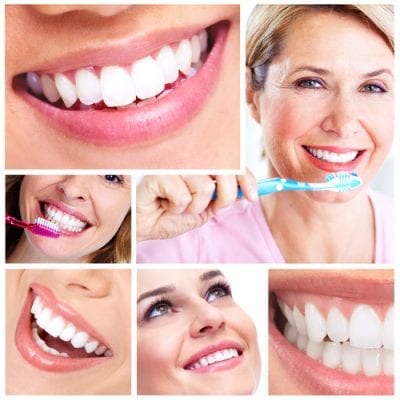So what’s the right way to brush your teeth? When properly brushing your teeth, it should take at least two minutes to go about it. Yes, 120 seconds of brushing. Many adults don’t bother or are unaware that you should brush that long at all. As such, you should do your part when it comes to informing friends and family about this little brushing tidbit.
You should use a stopwatch in order to know how long you’ve been brushing your teeth. It’s also recommended that you pay extra attention to your gum line and make sure to only brush your teeth with short, gentle strokes instead of hard, long ones that could do damage to the sensitive parts of your mouth.
Proper Brushing Recommendations 101
Here are some more tips and tricks towards ensuring proper brushing technique every time.
- When brushing your teeth, tilt the brush 45° against the gum line and roll or sweep the brush away from the line.
- To make sure you get fresher breath, brush your tongue too.
- Brush the areas around crowns, fillings, and other restored teeth. Brush the hard-to-reach back parts of your teeth as well.
- You should thoroughly clean the outer surfaces of your upper and lower teeth.
- Your brushes inside, outside, and the chewing surface of every tooth should be short strokes that go back and forth.
- From there, clean up the chewing surfaces of your teeth.
- Floss and gargle mouthwash for good measure for the sake of freshening your breath and bacteria removal.
What Type of Toothbrush Should You Use?
The best type of brush for plaque and debris removal from your teeth is a soft-bristled brush. Anything stiffer or harder can end up damaging your gums and causing more harm than actual hygienic benefits.
It’s also more preferable to keep your brushes small-headed as well, because they can fit better in your mouth and do more intricate cleanup on hard-to-reach back teeth (the same way a smaller brush can do better detailing work versus the broad strokes of a wider brush when making an oil painting).
There are also people who prefer a powered toothbrush as an alternative of sorts. It does a better job of teeth cleanup because you don’t have to move the head as much. The device vibrates for you. It’s perfect for people with limited manual dexterity or have difficulty brushing for whatever else reason.
Toothpaste Choice and Toothbrush Replacement
It’s important to pick the right toothpaste for your needs. There are various toothpaste variants for different conditions. If you have sensitive teeth, stained teeth, tartar, gingivitis, or cavities, you can find the right type of toothpaste to suit your specific condition. Just as your dentist or dental hygienist for his recommendation.
In regards to how often you should replace your toothbrush, you should do so when the bristles showcase wear or tear. As a rule of thumb, you should replace toothbrushes every three months or as soon as your brush has become damaged, whichever comes first. You should change toothbrushes after getting a cold, since the bristles can store germs that can lead to infection.
Thantakit International Dental Center is Thailand’s longest established dental center. Situated in Bangkok, our clinic is renowned across the world as a destination for world-class dentistry, with most of our patients flying to us from Australia.
Please contact us today and get a FREE dental consultation.












